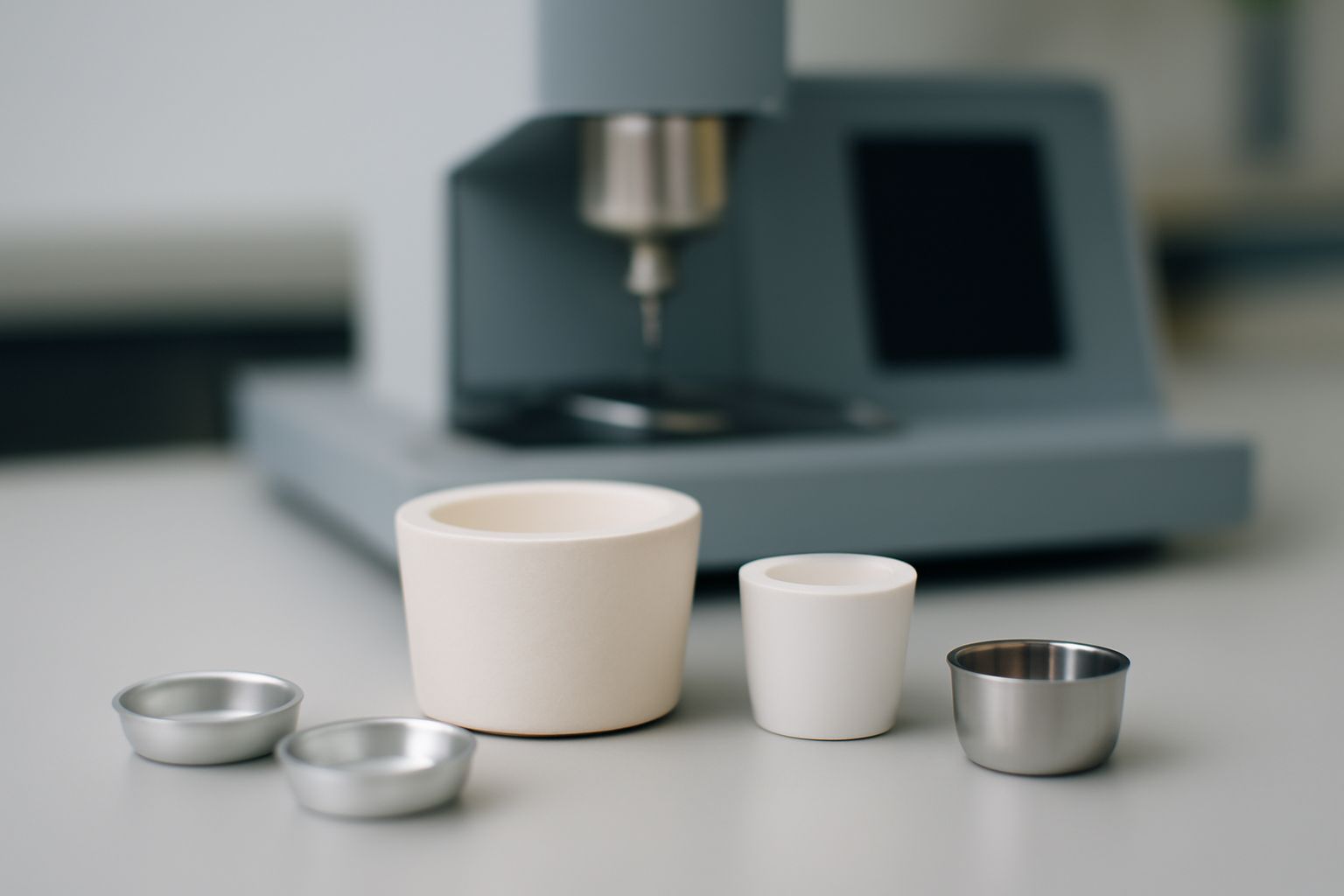Your cart is empty.
shop now
Your cart is empty.
shop now
Using the wrong sample pan or crucible causes laboratories to get unreliable thermal analysis data. Material science research depends on precise measurements to advance new discoveries and products.
TGA and DSC techniques require correct sample pans and crucibles for accurate measurement of properties like thermal stability, decomposition, and phase changes. Proper selection ensures that polymers, metals, and pharmaceuticals are thoroughly analyzed for their unique behaviors.

Every day, I see how small decisions about pan type or crucible material shape the quality of thermal analysis results. With each project, I look at compatibility, sample size, expected transitions, and industry standards. Let’s look deeper at how to make these choices in real-world material science labs.
New materials often fail in product tests due to unknown phase transitions or heat resistance. Without solid data, teams struggle to improve stability and usability.
TGA determines material weight loss and decomposition. DSC measures heat flow for transitions like melting and crystallization. Both methods reveal properties that guide design, safety, and processing.
| Technique | Main Measurement | Key Output | Materials Studied | Reference |
|---|---|---|---|---|
| TGA | Loss of mass vs. temperature | Decomposition temp, residue | Polymers, pharmaceuticals | Nature, ScienceDirect |
| DSC | Heat flow, enthalpy changes | Tg, Tm, crystallinity | Metals, alloys, organic compounds | Materials Today |
I always match the analysis method with the question: TGA when compositional changes matter, DSC for energy changes and transition mapping. Good pans and crucibles keep results sharp and reliable.
Not all materials behave well under thermal stress. Sample choice for TGA-DSC needs to reflect both scientific goals and equipment capability.
TGA-DSC can analyze polymers, pharmaceuticals, metals, ceramics, and composites. Each requires compatible pans for its unique stability, volatility, and reaction temperature range.
| Material Type | Best Method | Sampling Need | Pan/Crucible Suggestion | Reference |
|---|---|---|---|---|
| Polymers | DSC, TGA | Thermal transitions, degradation | Aluminum/Platinum pan | Polymer Journal |
| Pharmaceuticals | DSC, TGA | Drug stability, shelf life | Hermetic pan | International Journal of Pharmaceutics |
| Metals | TGA, DSC | Oxidation, melting | Boron nitride/platinum crucible | Metallurgical and Materials Transactions |
| Ceramics | TGA | Thermal stability | Alumina crucible | Journal of the European Ceramic Society |
When I set up a thermal analysis, I check chemical compatibility, possible reactions, and manufacturer advice on pan or crucible. Each sample demands its own approach for best data.
Poor pan choice leads to leaking, sticking, or unwanted reactions during heating. I have seen missing data and skewed baselines ruin hours of lab work.
The right pan or crucible protects against contamination, ensures proper sample-to-container contact, and supports required heating. Aluminum, platinum, alumina, and boron nitride are favorites for range and reliability.
| Material | Thermal Range (°C) | Chemical Resistance | Usage | Further Reading |
|---|---|---|---|---|
| Aluminum | -50 to 600 | Low-moderate | Polymers, organics | ScienceDirect |
| Platinum | up to 1700 | Very high | Reactive, high-value samples | Materials Today |
| Alumina | up to 1600 | High, moderate acids | Ceramics, inorganics | Nature |
| Boron nitride | up to 2000 | Non-stick, inert | Metals, advanced materials | ScienceDirect |
Before each project, I ask for application details to select the best vessel. Supplier advice, literature, and my past tests all support the right thermal analysis workflow.
Research labs and industry projects rely on TGA-DSC for more than routine testing. These methods give clues about new materials’ future performance and help tune product quality.
TGA-DSC data identifies phase transitions, stability, and reaction mechanisms. This knowledge feeds directly into polymer engineering, drug formulation, and the development of alloys or composites with targeted properties.
| Advancement Area | TGA-DSC Benefit | Example Use | Result | Reference |
|---|---|---|---|---|
| Polymer research | Finds Tg, degradation range | Blending for strength/flexibility | Better product design | Polymer Journal |
| Pharmaceuticals | Detects purity, stability issues | Shelf-life and process control | Improved drug safety | International Journal of Pharmaceutics |
| Alloy development | Maps melting/solidification | Custom superalloy creation | Reliability at high temp | Metallurgical and Materials Transactions |
| Green materials | Studies decomposition paths | Bio-based composite launch | Lower environmental impact | ScienceDirect |
With each test, I know the role of sample pan or crucible is as important as the method. Good equipment underpins every advance in material science, from new plastics to safer drugs.
The right choice of TGA-DSC pans and crucibles, matched to the material and application, drives better data and real progress in material science research worldwide.
Contact technical support: info@redthermo.com